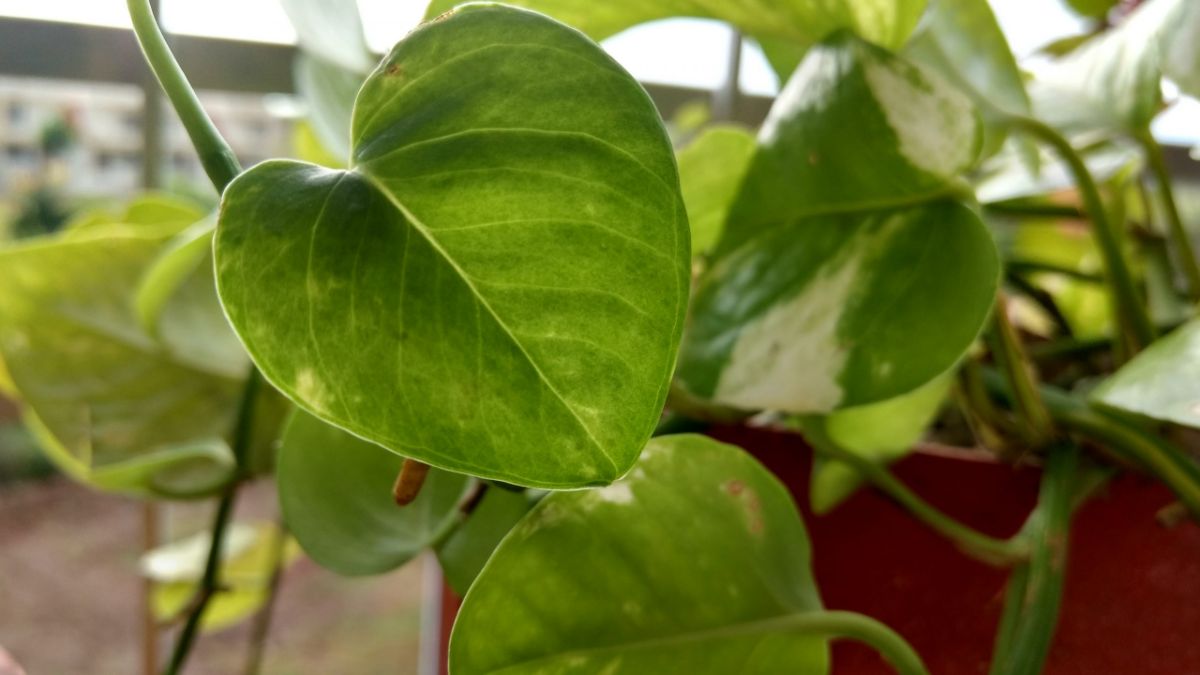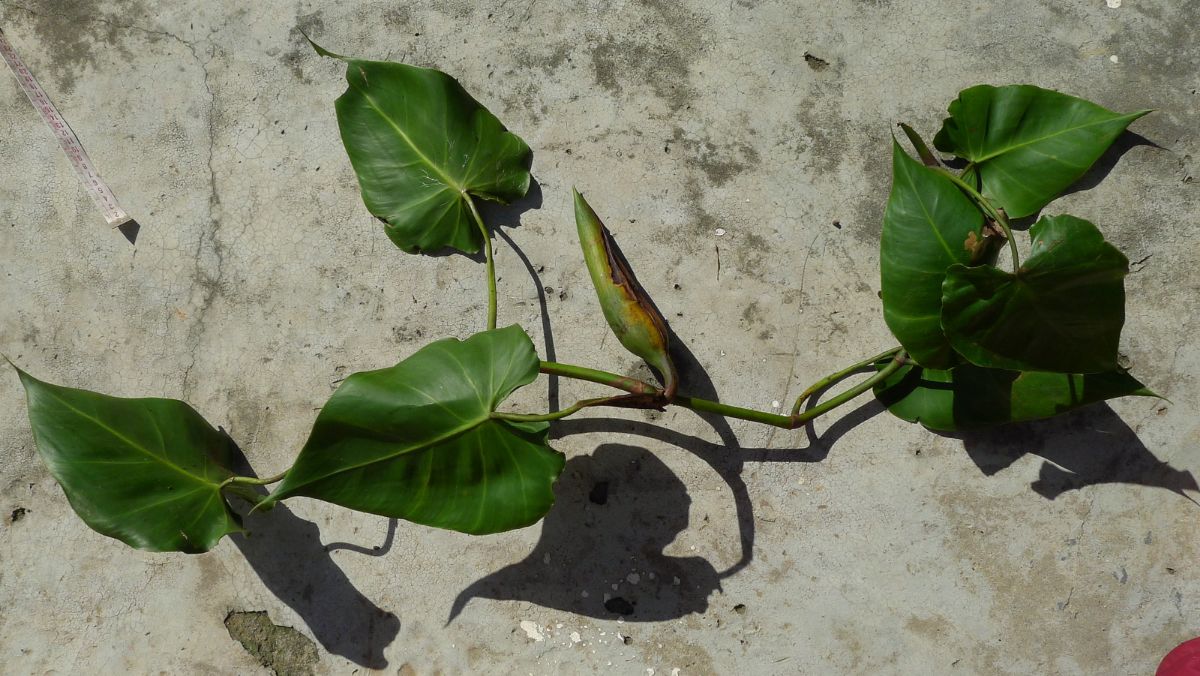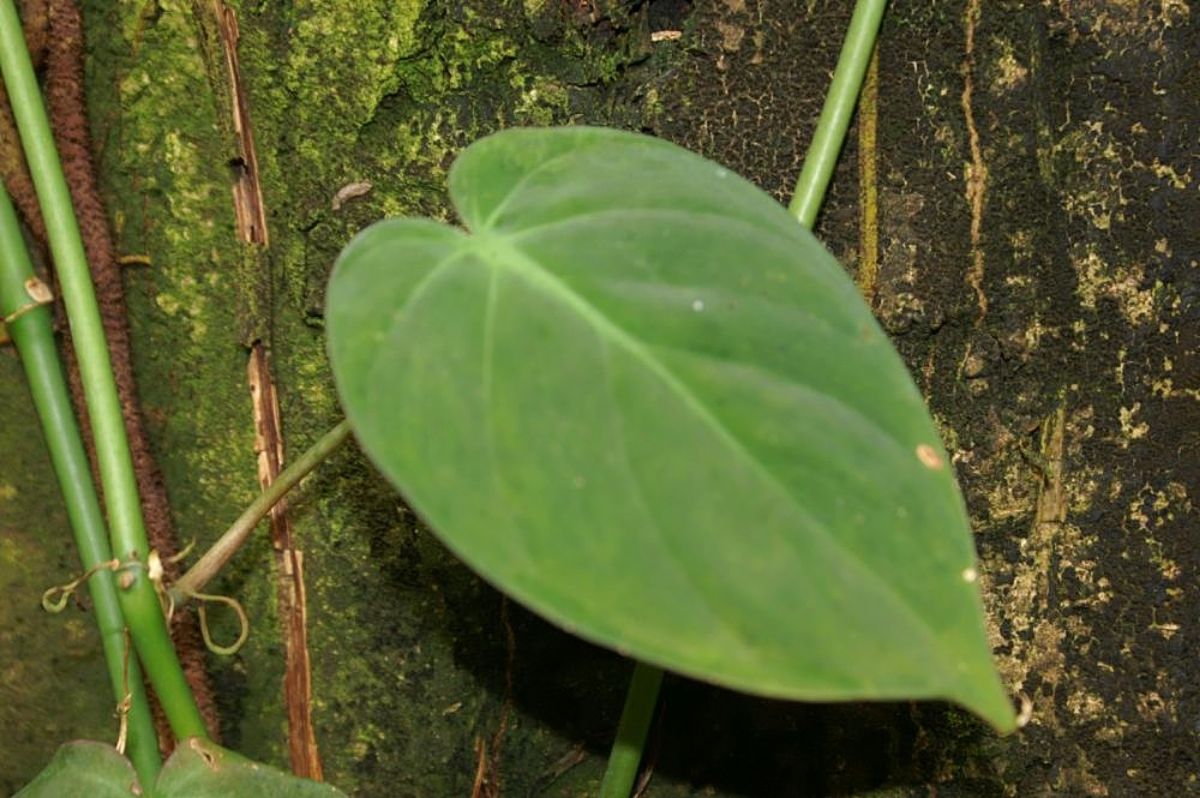
If you like indoor plants, surely, among the many you have seen, you have found one or more of them. Philodendron hederaceum. Known as the heartleaf philodendron, it is one of the most common and easiest plants to care for.
Do you want to know about her? What characteristics does it have and what care should you provide? Here is all the information you need to know.
What is Philodendron hederaceum

Source: Wikipedia | David J Stang
Philodendron hederaceum is an evergreen shrub belonging to the genus Philodendron. It is native to Central America and the Caribbean.
This shrub is characterized by being a climber, with stems that are quite thin, but that grow to exceed a meter in length with the aim of creating vines. Its leaves are dark green and it is called heart leaf philodendron precisely because the design of these simulates a heart.
Know that this plant is not "pet friendly" but can be toxic if ingested. Same for babies.
As for its size, it can easily reaching a meter in height and 50 cm in width. But it all depends on how it is placed, whether it is a climber or if it is left hanging.
Finally, we must tell you that the Philodendron hederaceum blooms. The problem is that it rarely does it indoors, only in its natural habitat is it normal for it to do so. In case you are so lucky, the flower is very similar to that of the peace lily or the duck flower.
Philodendron hederaceum care

Source: Wikipedia | Alex Popovkin
As it is usual to have this plant indoors, the care that you must provide is not too difficult and you do not have to be very aware of the plant. In general, what you should check is the following:
Lighting design
When you buy a Philodendron hederaceum they always tell you that it does not need light. And it is so, but you have to clarify. And it is that really, in its natural habitat, it receives very little light, which reaches the ground between the branches of trees. But some light it does need.
If you don't give it to them, then their growth will be much slower and the leaves that emerge will be smaller or there will be gaps between leaves on the stems. These are symptoms of a lack of light.
How much light? Not too much, and not direct light either. The best thing is that it is 3-4 hours of indirect light a day so that it can cover the needs it has. Do not put it in direct sun because the leaves will burn. In addition, in some cases, having lighting, their colors can vary in certain shades of green.
Temperature
La Philodendron hederaceum ideal temperature is between 13 and 27 degrees Celsius. In the morning, staying between 24 and 27 is ideal for this shrub, while at night it is not suitable for it to fall below 13 degrees.
Therefore, we can say that it tolerates high temperatures better than low temperatures, which is why it is protected from frost and cold. Likewise, you have to keep it away from drafts (it doesn't matter if they are hot or cold) to avoid damaging it.
Substratum
To have a healthy Philodendron hederaceum it is important that the soil used be very draining because it needs good oxygenation in its roots. Therefore, the best may be pine bark, peat moss, vermiculite or perlite. Once of these lands will provide you with the soil you need.
Irrigation

Source: Wikipedia | David J Stang
Regarding irrigation, we must make two differences. On the one hand, the irrigation itself; and on the other the humidity it needs.
Philodendron hederaceum is a plant that requires moderate irrigation during the growing season, that is, in spring and in summer. It is important that the soil is kept moist but not too moist to prevent the roots from rotting. In winter it doesn't need as much water and it will take longer to water it (perhaps once a month or a month and a half).
It is better to irrigate with lukewarm water and let it stand for at least 2-3 days to completely remove the chlorine.
In fact, Philodendron hederaceum is a plant that warns if it has an excess of water or a lack of it. If you see the leaves yellow, it means that it has too much water; while if they are brown, it needs more water. It is important not to go to these extremes because, one way or another, you will suffer.
Now, one of the most important care you must provide is humidity. Due to its natural habitat, it is a plant that is used to living in areas with high humidity. To achieve this, you can put the pot on a plate full of stones or pebbles, and cover them with water to create that humid environment. If you notice that the tips of the leaves are starting to turn brown, you will need to increase that humidity (for example by misting the plants two or three times a week).
Fertilizer
It is important, especially in the growing season (spring and summer). must be applied once a week, to be able to be liquid to mix it with the irrigation.
We recommend that you use a specific one for indoor plants.
Transplant
It is necessary to carry it out every 2-3 years. This does not mean that you should always put it in a larger pot (especially when you already have it in one) but that it is done mainly by a renewal of the earth.
If you notice that your plant is too fair, what some experts do is cut some roots, those that are sick, more deteriorated or very old to lighten and oxygenate the ones that remain and be able to reduce the size without having to change to larger pots.
Pruning
Philodendron hederaceum pruning can be done several times a year since it will be mainly to prevent the stems from growing too large or becoming stringy. This will help the growth of new shoots through the stem nodes.
But you can also use those cuttings to repot them in the pot to make it bushier.
Reproduction
In addition to what we told you before, the multiplication of Philodendron hederaceum is quite easy to achieve. The only thing you have to do, especially in spring and summer, is take cuttings of about 3-4 centimeters, with at least 3 leaves. It is important that you cut it below a node and you can have another plant growing in a matter of weeks.
Do you dare to have a Philodendron hederaceum?